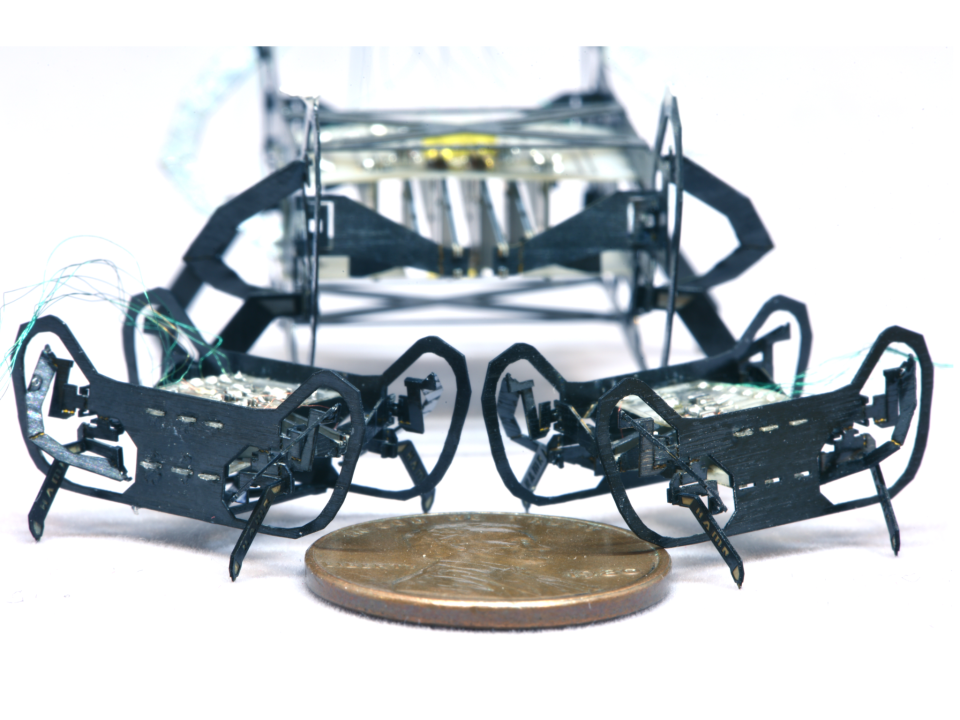Harvard builds tiny microbot that's the size of a penny

Scientists at Harvard have copied their large, insect-inspired robot HAMR (Harvard Ambulatory Microrobot) into a smaller form factor. The new robot, HAMR-JR, is the size of a penny, measuring 2.25 centimetres across.
The robot is capable of quick movement, able to travel 14 times the length of his body in a single second, which makes it one of the smallest and fastest robots currently made, according to Harvard. While it might be the size of a penny, it is significantly lighter, weighing only 0.3 grams.
The ability to keep the familiar design, but change the scale of the robot, means that it can be used in a variety of purposes, including surgeries or large-scale industry because of its ability to carry heavy payloads. The method of miniaturising the robot was surprisingly straightforward: researchers simply shrunk the 2D sheet design of the robot, as well as its circulatory, to a more minute scale.
“Most robots at this scale are pretty simple and only demonstrate basic mobility,” said Kaushik Jayaram, a former postdoctoral fellow at SEAS and Wyss and author of the research paper behind the robot, alongside Jennifer Shum, Samantha Castellanos and E. Farrell Helbling. “We have shown that you don’t have to compromise dexterity or control for size.”
However, making the robot smaller does effect some changes that need to be accounted for, such as stride length and the stiffness of its joints. The researchers developed a model which could predict running speed, foot force, and payload size based on the size of a target.
The robot’s bigger sibling, HAMR, was announced in 2013 and could be used for search and rescue and infrastructure inspection. It was also able to move across water by sinking itself and walking under the surface.
This is done by applying an electric voltage to the water, which reduces the contact angle between the feet of the robot and the water. This breaks the surface tension, and the robot will sink.
Currently, the larger robot requires assistance in the form of a soft slope or ramp in order to break out of the water, although it has been hypothesised that gecko-like adhesive legs or greater jumping ability would give it this functionality.
Since HAMR-JR has the same design as HAMR, it’s likely that improvements to the larger model can be translated to the smaller one, giving it all the same capabilities.

 Yahoo Finance
Yahoo Finance 